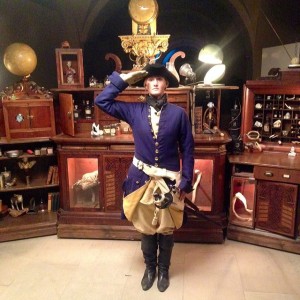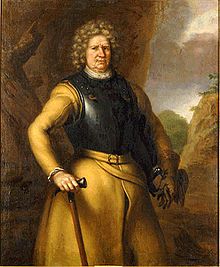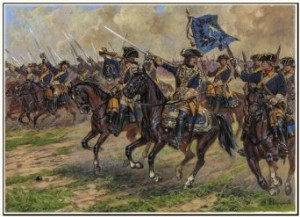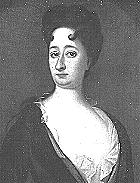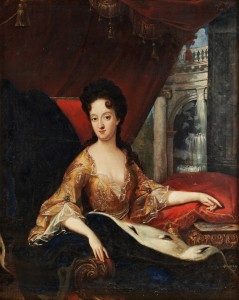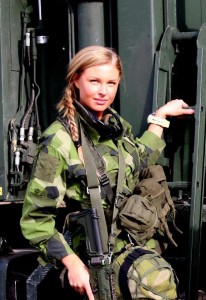Happy Pride Month!
In America, June is celebrated as Gay Pride Month; and so I will spend a few weeks in observance covering women who fall under the LGBT umbrella.
Our first subject is Ulrika Eleonora Stålhammar, and right up front, the pronouns are a bit tricky for this one. Ulrika was definitely assigned female gender at birth; but lived in a time which didn’t have very advanced thought regarding transgender individuals. Judging from some of her choices, it’s within the realm of possibility that, had Ulrika lived in the 21st century, she may have identified as a transman. But she said nothing of the sort (that we know of) while she was alive; and I don’t want to retroactively apply an identity to someone without more evidence than what I’ve got. So even though Ulrika might have been a transman, I’m going use the pronouns ‘she’ and ‘her’ (if you have evidence that this isn’t the case, please use the Suggestion Box and let me know!).
Another issue is language: there’s a ton out there about Ulrika… in Swedish. I’ve had to rely on English-language resources, and so some translation errors might have crept across. I apologize in advance for those!
Also, I could find precisely zero pictures of Ulrika; who apparently never sat for a portrait and has not been drawn or depicted in popular media since. I’ve tried to find relevant art, but such was also a bit difficult. So please enjoy this survey of 17th and 18th century Swedish art, which I hope gives you a feel for the time and place in which Ulrika lived!
Okay, enough preamble. Let’s get to this week’s Extraordinary Lady!
Ulrika Eleonara Stålhammar was born into a military family in 1688 in Sweden, the daughter of Lieutenant-Colonel Johan Stålhammar and the grand-daughter of Per Stålhammar, who both enjoyed distinguished military careers. Johan had no sons, and four other daughters along with Ulrika.
As a child, Ulrika disdained domestic, feminine pursuits – while her sisters were content to crochet and embroider, Ulrika preferred to be out in the dirt and sunshine. She particularly enjoyed riding horses, and was reportedly good enough at hunting that more than one person commented how unlucky she was to have been born female.
At age 14, in 1702, Ulrika’s father retired from the military. Unfortunately, a series of bad decisions led the Stålhammar family to near-ruin by the time Johan died in 1711. Though Swedish law at the time allowed for women to inherit property, Johan Stålhammar had died with virtually nothing to pass on to his daughters. They relied for a time on the charity of relatives, but that could not last forever. As a result, Ulrika’s sisters one by one found themselves marrying under financial duress, to men they would not otherwise have chosen, simply for economic security.
Ulrika, witnessing her sisters’ misery, swore she would not share their fates. And in 1713, she raided her father’s old wardrobe, stole a horse, and ran away to join the army under the name Vilhelm Edstedt (sometimes spelled Wilhelm).
At the time, Sweden was a decade into the Great Northern War. The war would last yet another decade, and would determine who got to run Sweden and then-Swedish territories. King Karl XII of Sweden and his allies were facing down none other than Peter the Great and his allies. The war would end with Sweden’s defeat in 1721, but at the time of Ulrika’s enlistment, Sweden was still giving it their all. As a result, the recruitment officers probably didn’t look too hard at this young, eager enlistee.
Interestingly enough, Sweden seems to have an informal tradition of women cross-dressing in order to go to war. Brita Olofsdottr dressed as a man to join the army in the 16th century, and several other women are known to have participated in the Great Northern War dressed as men: Margareta von Ascheberg, Margareta Elisabeth Roos and Anna Jöransdotter, whose story became public in 1714 and foreshadows Ulrika’s.
Ulrika served as an artillerist, which meant she got to shoot the cannons (fun!). By all accounts, she had an admirable military record, serving for 13 years (I really wanted to find out more about what she did during her career, but this is where I ran into the problem of ‘everything’s written in Swedish’).
In 1716, Ulrika (living as Vilhelm) met a housemaid by the name of Maria Lönnman. The two fell madly in love, and were quickly married after a whirlwind courtship.
By all accounts, Ulrika and Maria made each other very happy. Everyone knows ‘that’ couple – they’ve been together forever, and just seem to get each other. Ulrika and Maria were that couple to their friends and associates.
However, their happiness was not to last. In 1724, one of Ulrika’s sisters, Katarina, learned that her sister was living as a man and had married a woman. Being a devout Christian, she was abjectly horrified and threatened her sister with exposure, imprisonment and damnation.
Possibly out of shame and possibly simply self-preservation, Ulrika swore to Katarina that she would repent, leave the army and confess her sins. Which she did, though it took her awhile to get around to it. She left the army in 1726, and wrote a letter of confession to the Swedish government in 1728. At some point, she revealed her biological sex to Maria. Which might have been shocking to some women, but I suspect Maria had figured out by now what was going on. Maria decided Ulrika’s gender didn’t matter, and she would rather stay with the person she loved.
Ulrika and Maria were called to stand trial. The judges, after consulting their Bibles, eventually charged Ulrika with violating the order of God by living as a man and with making a mockery of the sacrament of marriage by marrying a woman. After Maria swore she did not know Ulrika’s true sex when they married, but still chose to stay with her after discovering the truth, the court decided to charge her with the lesser ‘crime’ of homosexuality. Interestingly enough, no one seemed angry that Ulrika had joined the army under false pretenses – indeed, her military record stood in her favor.
Sweden actually had very few laws against homosexuality at the time; though largely because the fear was that speaking publicly about homosexuality would somehow inspire people to want gay sex. While male homosexuality had been a crime in the country since at least the early 1600s, female homosexuality was only outlawed in 1714, when Anna Jöransdotter, mentioned above, was found to have married a woman.
Of especial (and possibly prurient) interest to the judges was whether or not Ulrika and Maria had ever consummated their marriage. Both women denied ever engaging in sexual relations with each other. Maria said she had believed ‘Vilhelm’ to be impotent; and, as she was a rape survivor, was quite content to live without sex.
Yes, it’s possible they were lying – but even if they were, there’s no way to prove it. Ulrika underwent a medical examination as part of the trial, and the physician reported that Ulrika appeared female, except for not having developed breasts. So it’s quite possible that Ulrika suffered from some hormonal condition, a side effect of which meant she did not have a sex drive. Or she was asexual. Or, yes, lying to save herself and the woman she loved.
Ulrika and Maria were able to produce a long parade of witnesses, who testified not only to the couples’ enduring love for each other, but also Ulrika’s devoted service to her country.
In the end, the judges were inclined towards leniency, in large part because they believed Ulrika and Maria had a chaste relationship. To the judges, the fact that Ulrika and Maria lived without sex made their love a pure, spiritual union – better, in some ways, than a traditional heterosexual marriage. Ulrika was sentenced to one month in prison and Maria to ten days. The king at the time, King Frederick, had taken a personal interest in the case and said that Ulrika did not need to serve her sentence in one of the worse prisons and could enjoy a few comforts.
However, in a very sad turn (as if being put on trial simply for loving someone wasn’t sad enough), the two women were made to live apart from each other. Ulrika lived with relatives at a place called Hultsjö manor; while Maria found work with one of Ulrika’s aunts at another estate. I tried to find out where these manors were, but I couldn’t figure out how far apart the women were made to live. I hope it wasn’t too far, and that they at least got to see each other on occasion. Ulrika and Maria did keep in constant contact via letter; though, and it’s obvious that even distance didn’t dim their devotion to each other.
Ulrika died in 1733, at age 45. Maria would work as a housekeeper until her death in 1761, and I could find no indication she ever married again.
In modernity, Ulrika has become a hero to the Swedish people, particularly those identify along the LGBT spectrum. I found reference to a play which was either titled “The Amazon of Charles XII” or in which Ulrika is called that. But, again, more Swedish.
Today, Sweden welcomes female enlistees into it’s armed forces. In 1995, the country became the third to offer a type of civil union to same-sex couples; and in 2009 formally legalized same-sex marriage. That same year, the Church of Sweden agreed that same-sex weddings could be performed by ordained clergy in their churches.
Resources
